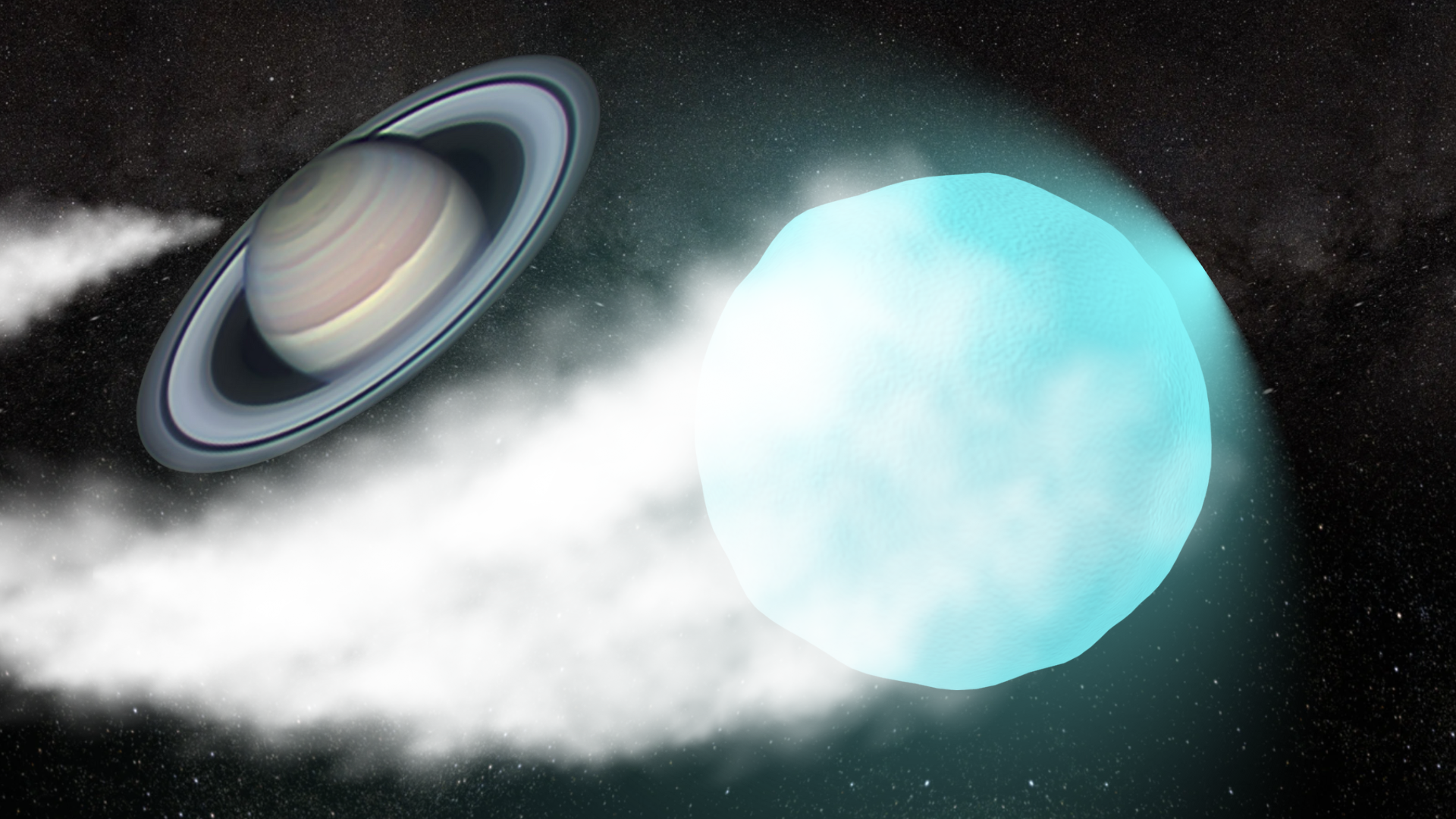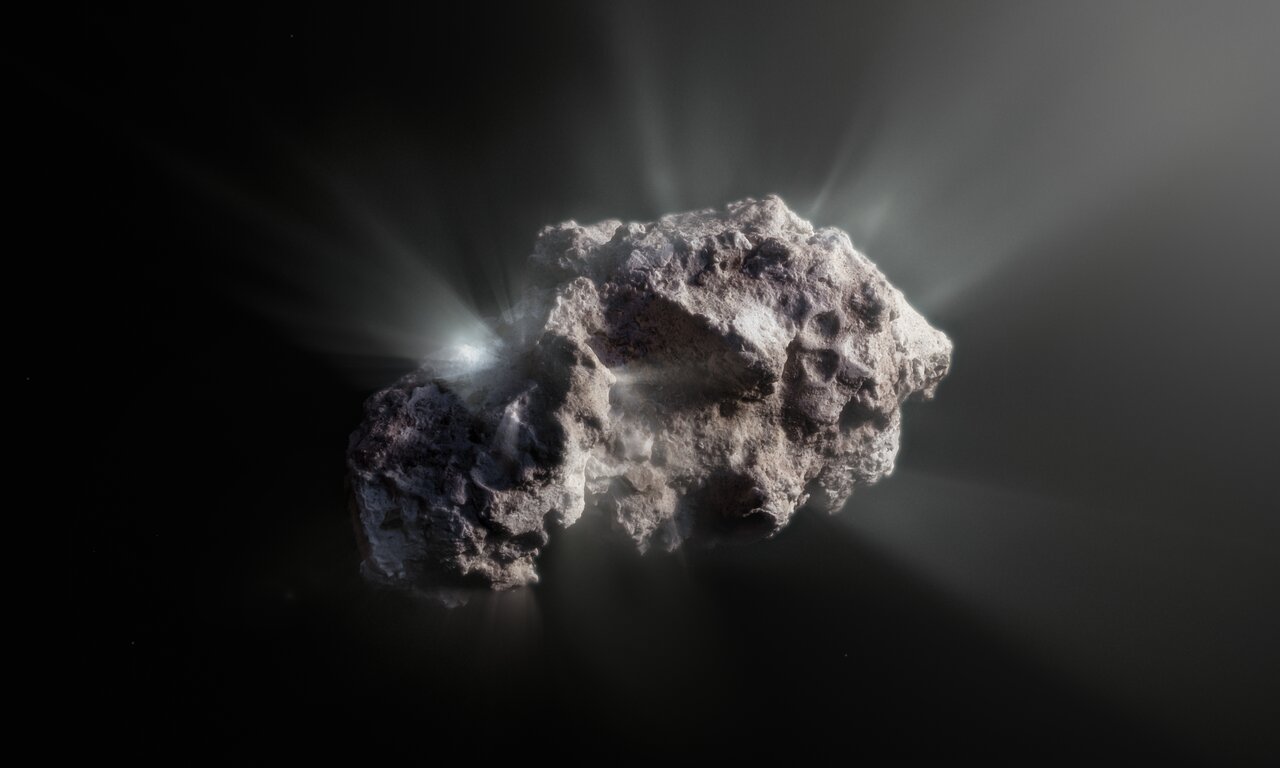
Scientists have discovered a comet traveling one way out of the solar system after a close encounter with Saturn.
The comet, designated Comet A117uUD (A117uUD), was only discovered on June 14, 2024, by the Asteroid Terrestrial-impact Last Alert System (ATLAS). Yet, researchers were able to use 142 observations of the comet to "wind back" its orbit around the sun. This revealed that A117uUD met up with Saturn, the second-largest planet in the solar system, famous for its bright and distinctive rings, in 2022 and was changed forever.
The meeting with the gas giant put the comet on a highly flattened or elliptical orbit that will fling it out into interstellar space beyond the influence of the sun. Using models to fast forward the path of A117uUD, the team found that it will exit the solar system at a speed of around 6,710 miles per hour (10,800 km/h). That is about four and a half times the top velocity of a Lockheed Martin F-16 jet fighter.
This is only the second solar system comet that we have seen in the process of being launched out of the solar system. The first was Comet C/1980 E1 (Bowell), which was put on a solar system escape path by an encounter with Jupiter on Dec. 9, 1980.
"Our results show that the case of comet A117uUD is similar to that of C/1980 E1 (Bowell), disfavoring an extrasolar origin for A117uUD," the team behind the research write in a paper published in the journal Research Notes of the AAS. "The fact that two ejections after planetary encounter were observed in less than 45 years suggests that such events are relatively frequent."
Related: A comet approaching Earth could become brighter than the stars this fall
Make up your mind. Are you coming or going?
It wasn't always clear that A117uUD was a solar system body destined to leave its home planetary system. When the team behind this discovery first analyzed the icy space rock, they thought its hyperbolic orbit could indicate that it was actually an intruder into our solar system.
The first solar system interloper discovered by humanity was the oddly cigar-shaped asteroid 1I/’Oumuamua (’Oumuamua), the moniker of which is a Hawaiian word that roughly translates as "messenger from afar arriving first."

When it was discovered in 2017, ’Oumuamua immediately stood out to astronomers because of its highly unusual shape and the fact that it had no coma (the halo that surrounds comets), or distinctive cometary tail despite appearing to be a strange comet/asteroid hybrid. It was also accelerating away from the sun, something that led to the now dismissed (mostly) claim that this visitor from another planetary system could be an alien spacecraft.
The solution to these unique features was the roasting of ’Oumuamua by cosmic radiation before reaching the solar system, which caused hydrogen to be created and become trapped within its body. That hydrogen was liberated and began to spray out of the space rock once ’Oumuamua reached the relative warmth of our planetary system, thus propelling it.
'Oumuamua is now out beyond the orbit of Neptune, passing through the Kuiper Belt, a ring of icy bodies near the outer edge of the solar system. Not only is it beyond the reach of our telescopes, but the interstellar interloper will never come back toward Earth or the sun.

’Oumuamua isn't the only interstellar intruder we have seen enter the solar system, however. Comet 2I/Borisov (2I/Borisov) was the second confirmed interstellar body and the first confirmed interstellar comet found within the solar system.
2I/Borisov was discovered by Crimean amateur astronomer Gennady Borisov on Aug. 30, 2019. This solar system invader really put A117uUD's speed to shame, racing through the solar system at a hair-raising 110,000 mph. That's 150 times the speed of sound, and it leaves a Lockheed Martin F-16 in its dust trail, traveling 75 times as fast as the jet fighter's top speed.
Like 'Oumuamua, 2I/Borisov was just passing through, briefly fascinating astronomers and the general public alike, as it headed toward a solar system exit, never to return.
The encounter between A117uUD and Saturn impacted the comet's orbit to the extent that the team was unable to reconstruct it prior to the meet-up, but they did enough to assure themselves this wasn't a third extra-solar interloper.
Maybe one day, the Saturn-ejected comet A117uUD will thrill and entice the astronomers of some distant alien civilization, perhaps billions of years after its discoverers on Earth have vanished.




!["[T]he First and Fifth Amendments Require ICE to Provide Information About the Whereabouts of a Detained Person"](https://images.inkl.com/s3/publisher/cover/212/reason-cover.png?w=600)


